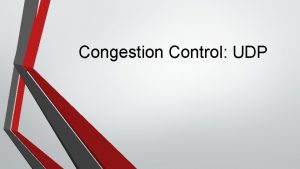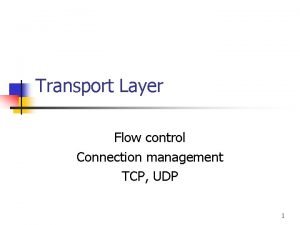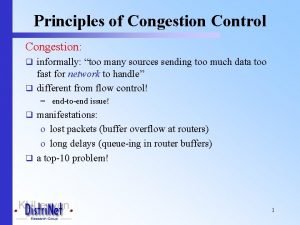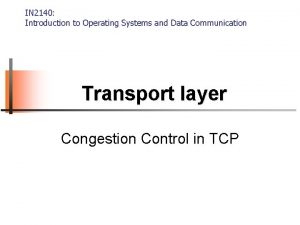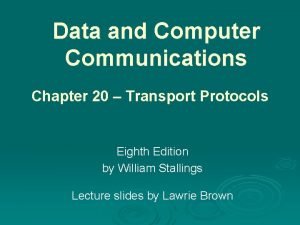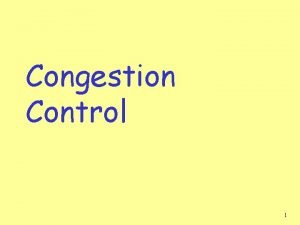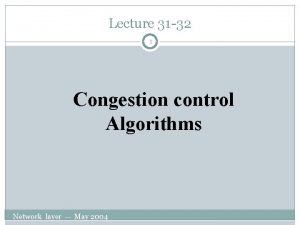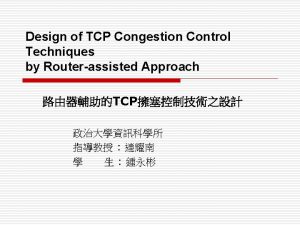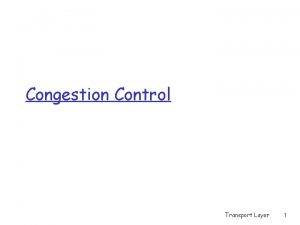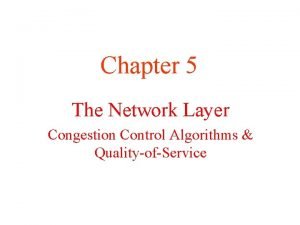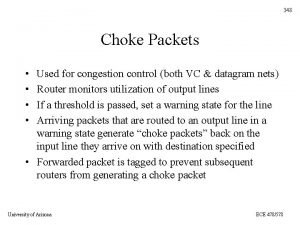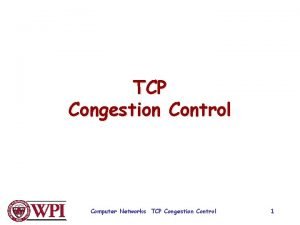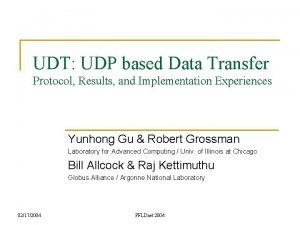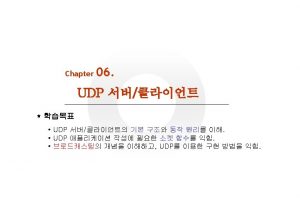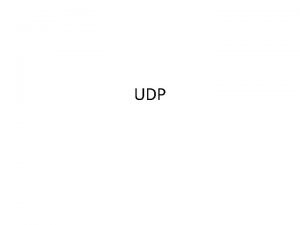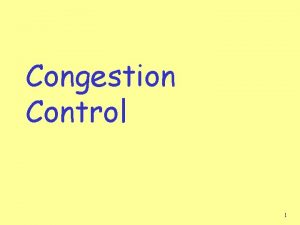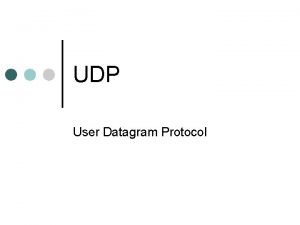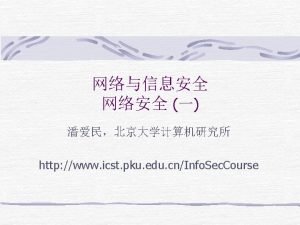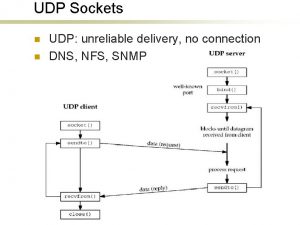Congestion Control UDP What is Congestion Control Refers
















- Slides: 16

Congestion Control: UDP

What is Congestion Control? • • Refers to the management of packet loss and signal degradation Handled by both Network and Transport layers Provide efficiency and power to bandwidth Allocates resources based on usage

Elements of Congestion Control • Efficiency and Power • Power = Load/Delay • Max-Min Fairness • Convergence

AIMD (Additive Increase Multiplicative Decrease) • Congestive control law for appropriate operation • Balance between fairness and efficiency

Congestion and Wireless • Higher loss rate than wired connections • leads to unnecessary throttling • Goal: Bridge gap between packet loss and bandwidth errors


UDP (User Datagram Protocol) • Transport layer protocol • Connectionless • Provides means for sending encapsulated packets without an established connection

UDP Structure • Each segment sent by UDP consists of 4 parts • Source • Destination • Length • Checksum ● Segments are sent without previous connection attempts. ● Missing segments are not re-sent

Remote Procedure Call (RPC) ● Allows execution on different address spaces from a source ● Request-Response Execution ● Used as basis for many network applications

RPC Drawbacks • Pointers are always required • Data type ID’s are sometimes lost • Global variables are lost due to procedure operating on non-source machines

Real-Time Transport Protocol (RTP) • Multiplex real-time data streams onto single stream of UDP packets • Packets are not specially treated and have no guarantees about delivery • RTP header consists of three 32 -bit words and potentially some extensions

RTP placement in the protocol stack (left) Method of payload nesting within packets (right)

Real Time Transport Control Protocol • Handles feedback, synchronization, and the UI • Assesses network to adapt quality for the best performance • Means of controlling data output through the network

Playout with Buffering and Jitter Control • Jitter is the difference in relative delivery times among sent packets • Buffer stores packets for a given time period • Buffer then sends packets to receiver with a brief pause at the start to cover jitter • Packets that don’t reach the buffer on time are dropped

Implementation

Questions?
 Udp congestion control
Udp congestion control Circumciliary congestion and conjunctival congestion
Circumciliary congestion and conjunctival congestion Flow control udp
Flow control udp Principles of congestion control
Principles of congestion control In2140
In2140 Tcp congestion control
Tcp congestion control Traffic throttling and load shedding
Traffic throttling and load shedding Describe the general principles of congestion control
Describe the general principles of congestion control Congestion control principles
Congestion control principles Load shedding in congestion control
Load shedding in congestion control New reno tcp
New reno tcp Principles of congestion control
Principles of congestion control Congestion control in network layer
Congestion control in network layer Choke packet
Choke packet Tcp header segment
Tcp header segment General principles of congestion control
General principles of congestion control Udt protocol
Udt protocol
